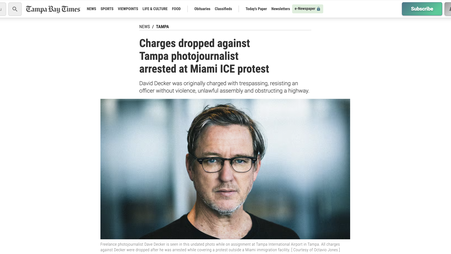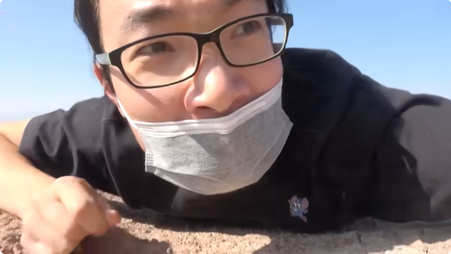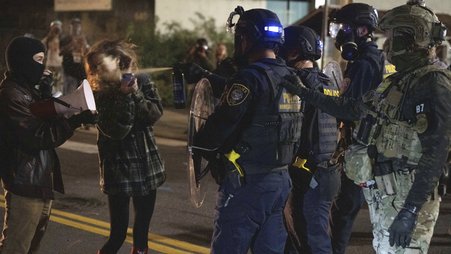The situation in Ferguson, Missouri—where four days ago the police killed an unarmed teenager—took another disturbing turn yesterday as cops decked out in riot gear arrested and assaulted two reporters covering the protests, Washington Post’s Wesley Lowery and Huffington Post’s Ryan Reilly, as they were sitting in a McDonald’s, quietly charging their phones.
The arrests were undoubtedly a gross violation of the reporters' First Amendment rights, and both the attempts to stop them from filming and their assault by police officers were downright illegal. But there’s another issue at play here, an issue which has led to the environment in which cops think they can get away with these acts: the militarization of local police.
The public has been gripped these last few days by disturbing photographs of police with automatic assault rifles, snipers, tear gas, body armor, tanks, LRADs (Long Range Acoustic Devices) facing peaceful, unarmed protesters in Ferguson. As managing editor Ryan Grim noted in Huffington Post’s statement their reporter's arrest, “Police militarization has been among the most consequential and unnoticed developments of our time, and it is now beginning to affect press freedom.”
As folks who have closely followed criminal justice issues (or the Occupy Wall Street protests from two years ago) know, this is a problem that has been brewing for years. The quintessential book on the issue was written last year by journalist Radley Balko, who now covers criminal justice issues at the Washington Post. The ACLU also released a comprehensive report about police militarization earlier this year. Matt Apuzzo also covered the issue on the front page of the New York Times just two months ago, reporting:
During the Obama administration, according to Pentagon data, police departments have received tens of thousands of machine guns; nearly 200,000 ammunition magazines; thousands of pieces of camouflage and night-vision equipment; and hundreds of silencers, armored cars and aircraft.
The equipment has been added to the armories of police departments that already look and act like military units. Police SWAT teams are now deployed tens of thousands of times each year, increasingly for routine jobs. Masked, heavily armed police officers in Louisiana raided a nightclubin 2006 as part of a liquor inspection. In Florida in 2010, officers in SWAT gear and with guns drawn carried out raids on barbershops that mostly led only to charges of “barbering without a license.”
All told, the Department of Homeland Security has given away more than $35 billion in grants and equipment to local police since 2002. Newsweek has more about the law that helped make it happen.
But until now, this issue has not really reached the mainstream, or if it has, it's been thought of as something that happens in a foreign authoritarian country and not the United States. Besides the arrests yesterday, you can watch video of Al Jazeera journalists having tear gas shot directly at them by these police forces (and perhaps mistake it for footage from Tahrir Square in Egypt). Or you listen to a brave citizen journalist operating a livestream describe events as police demand people to turn off their cameras, just as the tear gas and rubber bullets start to fly. Or you can think about citizen journalist Antonio French who was not as lucky as the other two reporters and is still sitting in jail.
In response to the travesty in Ferguson, the Justice Department indicated it may re-open a broad review of local police tactics around the country to investigate some of these issues. That is the least they should do. The rights of countless lawful citizens have been trampled on in Ferguson and around the country thanks to these police tactics, and something needs to be done soon.
But reporters should take note: these issues don't just affect protesters, but also affect those who cover the protest. It creates an environment where police think they can disregard the law and tell reporters to stop filming, despite their legal right to do so, or fire tear gas directly at them to prevent them from doing their job. And if the rights of journalists are being trampled on, you can almost guarantee it's even worse for those who don't have such a platform to protect themselves. Mr. Lowery said it best after he was released from jail yesterday:
“I knew I was going to be fine,” he said. “But the thing is, so many people here in Ferguson don’t have as many Twitter followers as I have and don’t have [Washington Post owner] Jeff Bezos or whoever to call and bail them out of jail.”




